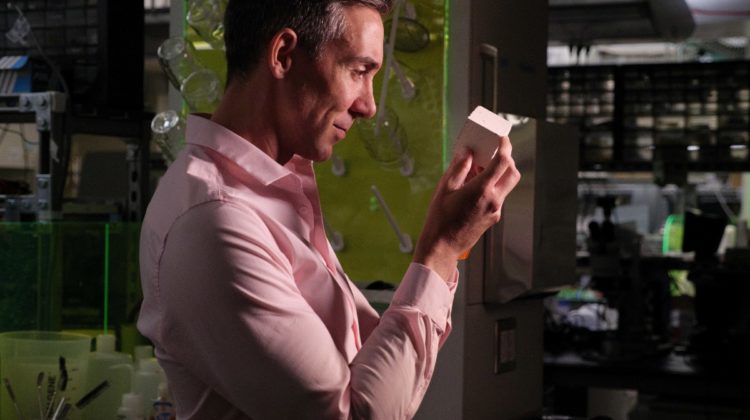
A research team led by engineers at the University of Colorado Boulder has figured out a way to make cement production carbon neutral – and even carbon negative – by pulling carbon dioxide out of the air with the help of limestone-producing microalgae.
Concrete, one of the most ubiquitous materials on the planet, starts as a mixture of water and cement, which forms a paste to which aggregates are added. The paste binds the aggregates together, and the mixture hardens into concrete.
To make portland cement, the most common type of cement, limestone is quarried and then burned at high temperatures, releasing large amounts of carbon dioxide; global cement production accounts for seven per cent of annual greenhouse gas emissions. The research team found that replacing quarried limestone with biologically grown limestone, a natural process that some species of calcareous microalgae complete through photosynthesis (just like growing coral reefs), creates a net carbon neutral way to make portland cement. In short, the carbon dioxide released into the atmosphere equals what the microalgae already captured.
Ground limestone is also often used as a filler material in portland cement, typically replacing 15 per cent of the mixture. By using biogenic limestone instead of quarried limestone as the filler, portland cement could become not only net neutral but even carbon negative by pulling carbon dioxide out of the atmosphere and storing it permanently in concrete.
If all cement-based construction around the world was replaced with biogenic limestone cement, each year, two gigatons of carbon dioxide would no longer be pumped into the atmosphere and more than 250 million additional tons of carbon dioxide would be pulled out of the atmosphere and stored in these materials.
This could theoretically happen overnight, as biogenic limestone can ‘plug and play’ with modern cement production processes, said Wil Srubar, an associate professor in civil, environmental and architectural engineering. ‘We see a world in which using concrete as we know it is a mechanism to heal the planet,’ he said. ‘We have the tools and the technology to do this today.’
The idea of growing limestone particles using microalgae to produce concrete came to Srubar while he was snorkelling on his honeymoon in Thailand in 2017. He saw first-hand how corals grow their own durable, long-lasting structures from calcium carbonate, a main component of limestone. ‘If nature can grow limestone, why can’t we?’ he thought.
‘There was a lot of clarity in what I had to pursue at that moment. And everything I’ve done since then has really been building up to this,’ said Srubar. He and his team began to cultivate coccolithophores, microalgae that sequester and store carbon dioxide in mineral form through photosynthesis. The only difference between limestone and what these organisms create in real time is a few million years.
With only sunlight, seawater and dissolved carbon dioxide, the tiny organisms produce the largest amounts of new calcium carbonate on the planet and at a faster pace than coral reefs. ‘On the surface, they create these very intricate, beautiful calcium carbonate shells. It’s basically an armour of limestone that surrounds the cells,’ said Srubar.
The microalgae are very hardy, capable of living in a wide range of conditions, which makes them good candidates for cultivation. According to the team’s estimates, only 400,000–800,000 hectares of open ponds would be required to produce all of the cement that the USA needs – only one per cent of the land used to grow corn.
And limestone isn’t the only product microalgae can create. Their lipids, proteins, sugars and carbohydrates can also be used to produce biofuels, food and cosmetics, so they could also be a source of other, more expensive co-product, helping to offset the costs of limestone production.
Global construction is currently on track to build a new New York City every month for the next 40 years. To Srubar, this global growth isn’t just an opportunity to convert buildings into carbon sinks but to clean up the construction industry. He hopes that replacing quarried limestone with a homegrown version can also improve air quality, reduce environmental damage and increase equitable access to building materials around the world.
‘We make more concrete than any other material on the planet, and that means it touches everybody’s life,’ said Srubar. ‘It’s really important for us to remember that this material must be affordable and easy to produce, and the benefits must be shared on a global scale.’


